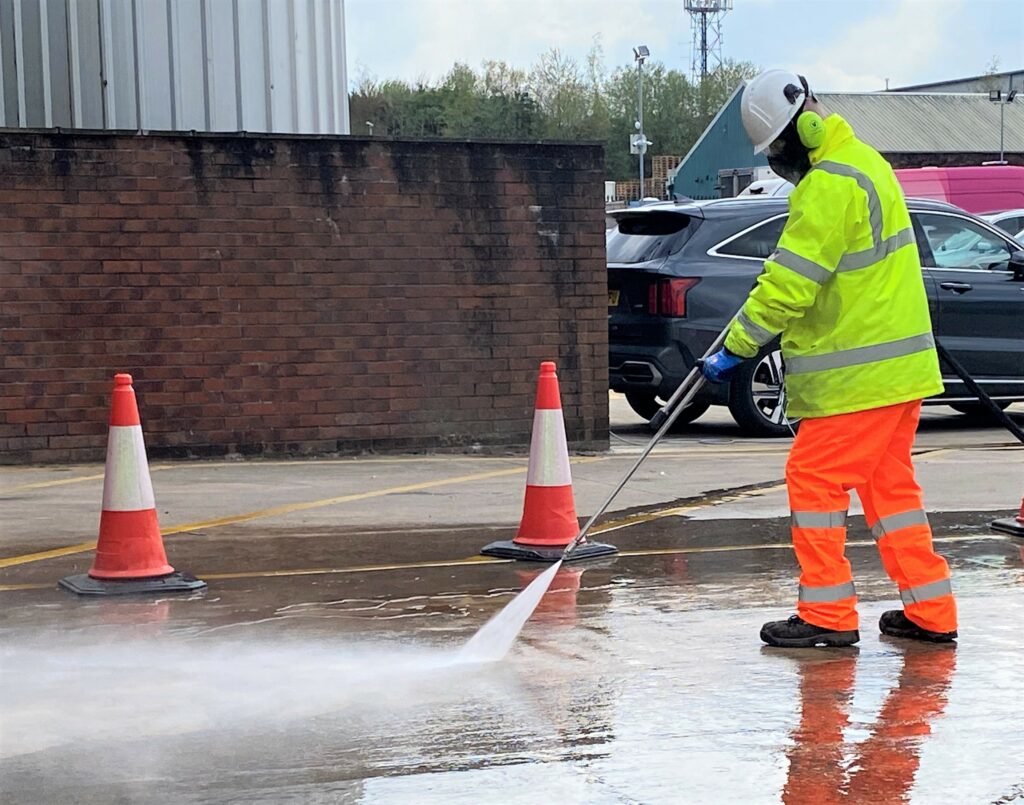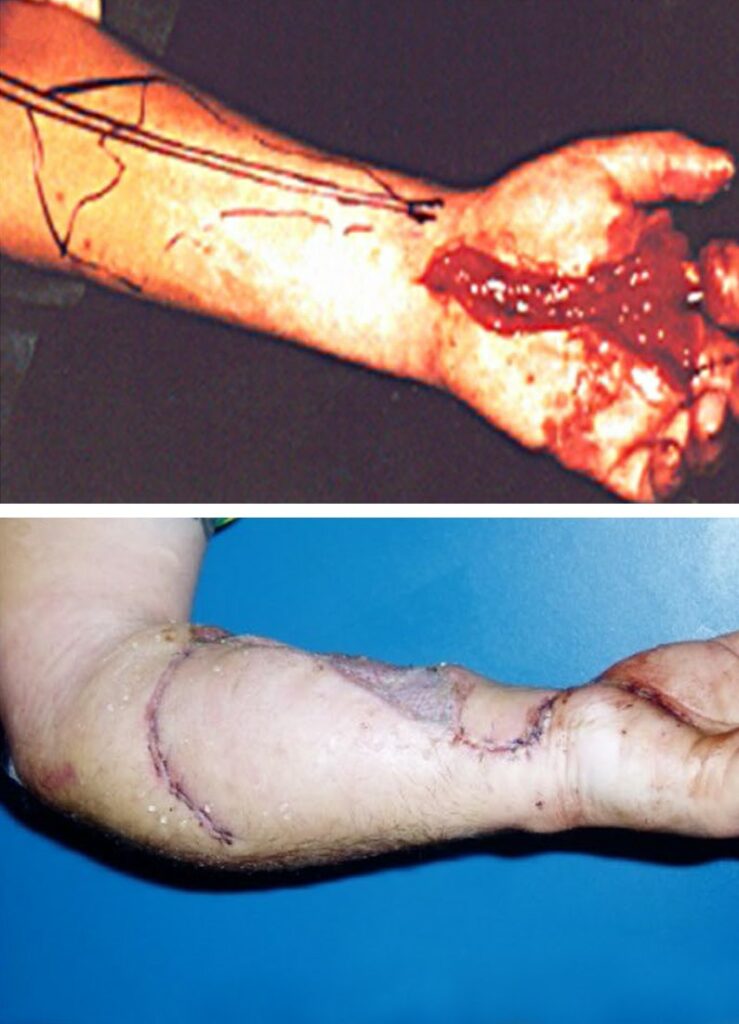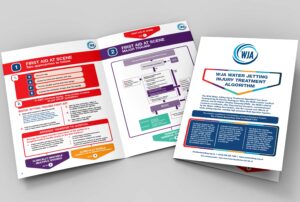The Water Jetting Association’s senior medical advisor is concerned that water jetting injuries are going under-reported. The WJA’s General Manager, Leanne Smith, explains the response to his concern and latest initiatives to promote safety in the industry.
Dr Sancho Rodriguez-Villar is an intensive care consultant at Kings College Hospital, in London. He is also a world expert on fluid injection injuries. Those are injuries caused by any fluid – it could be hydraulic oil, petrol, chemicals, paints, or water – breaking through skin or another body membrane.
It is why, in 2016, the WJA commissioned Dr Rodriguez-Villar to lead a team to study injuries caused by water jetting and fluid injection injuries in particular. The topic was complex and the research thorough. Reason why it took three years to complete.

The resulting research paper, Management of industrial high-pressure fluid injection injuries (IHPFII): the Water Jetting Association (WJA) experience with water driven injuries, was published in the European Journal of Trauma Medicine in 2019. It is also available on other medical research platforms.
Global interest
Since then, the paper has been downloaded more than 10,000 times, making it, almost certainly, the most important source of detailed and peer-reviewed information about water jetting injuries in the world.
It took Dr Rodriguez-Villar by surprise. He puts it down, in part, to water jetting applications becoming more common across an increasing number of industries, including commercial cleaning, water utilities, construction, manufacturing, energy generation, and even water sports.

He also concludes that the scale of global interest into the research indicates water jetting injuries and other fluid injection injuries are very likely to be under-reported.
In a video interview recorded by the WJA, available on the association’s website, he says: “So, definitely we can say [these injuries] are not as rare as we thought initially.
“We need to be very careful with that. I will say not as uncommon, but very likely not reported. Yet the injuries have potentially significant consequences for those who suffer them.”
Dr Rodriguez-Villar and the WJA are now working together to try to ensure people get the best medical advice about water jetting injuries and that research can continue into how best to treat them.
It means people with concerns can contact him via the WJA website and share information in confidence, in the manner of a doctor-patient relationship.
Injury algorithm
Water under just 100 psi (7bar) of pressure can piece skin and enter the body. Water jetting operatives can work at pressures of over 40,000 psi (2,600 bar).
Dr Rodriguez-Villar makes the point: “The speed of the water is over 2,600 kilometres per hour, well above the speed of sound . So it’s the speed of the bullet.”
This means the water can penetrate the skin with extreme force, taking a range of contaminants, including oils, chemicals, dust, organic matter, viruses and bacteria deep into the body.

Injury before and after
However, because the entry point is very small, medical professionals often do not appreciate the severity of the injury. Patients can be discharged without the appropriate treatment and then go on to experience severe complications. This can result in further life-changing injury or death.
It is for this reason that a key element of the research was the development of a water jetting injury treatment algorithm. This provides clear, up-to-date advice for the most effective treatment of injuries from first aid, through hospital care to discharge and beyond.
The algorithm has now been redesigned into an A4 format with clear, colour-coded pathways through every stage of treatment, so paramedics, physicians, nurses and therapists can quickly check best practice guidance.
Safety code
The WJA is also continuously improving other vital elements of its guidance to the water jetting industry, notably its codes of practice and its training programme (the water jetting treatment algorithm being key elements of both).
We have two codes of practice – the Blue Code, for the safe use of high and ultra-high pressure jetting equipment, and the Red Code, for water jetting in drains and sewers and surface preparation with a jetting gun up to a pressure of 275 bar that an operative can comfortably control.
Both codes have been thoroughly reviewed and updated during 2023, with guidance strengthened, a process supported by our key external stakeholders, notably the HSE.
For example, in many cases where we previously advised actions ‘should be’ taken, we now make clear they ‘shall be’ taken.
A new Purple Code, for pressure washing, is due to be published by the end of 2023.
Skills training
The WJA has also reviewed and updated its City & Guilds accredited training programme, which is informed directly by the guidance in or codes of practice.
The programme gives operates a theoretical and practical grounding in water jetting to underpin workplace learning and practice (there is a stand-alone pressure washing course).

Operatives must attend and pass a one-day class-based WJA Safety Awareness course and at least one practical module, selected from: Surface Preparation (SP), Hydrodemolition (HD), Tube and Pipe (TP), Drain and Sewer (DS), or Drain, Sewer and Surface Preparation (DSP).
They then receive their WJA Training Card, which is valid for three years. At this point, the card must be renewed by attending and passing a Safety Awareness Refresher course, which includes a practical assessment.
The DSP practical module is a new course that combines assessments of practical skills in drain cleaning and surface preparation using a hand-held jetting gun.
It aims to eliminate temptations to use hose nozzles to carry out asset washdowns, a common task for drainage contractors, and provide skills needed to expand services to include industrial cleaning.
Farmworker support
In another new initiative for 2023, we are offering free training places to farmers who often use water jetting to wash down equipment and production areas, such as milking parlours.
They can take places available in a free training programme designed to help WJA members who only need to place up to two operatives at a time on a course.
The support for farmers reflects the WJA’s desire to work in safety-critical sectors that use water jetting but, conventionally, do not appreciate the value of, and urgent need for, structured training.
Competency course
The WJA is also keen to encourage more companies to take up our new Level 2 Water Jetting Technician vocational qualification, which is accredited by ABBE, is our first competency qualification for water jetting.
WJA member RGL Services has been the first contractor to trial the course, which combines City & Guilds training courses with a programme of worksite assessment.
RGL Services Contracts Director and Contracts Supervisor Ian Chapman said: “This course is the necessary and natural next step for WJA training. It’s the way forward.
“It has been a very positive experience for us as a company and for our operatives. We’ve identified multiple benefits that support more effective operational performance and our reputation as a high performance business.”
JETTING SHOW FIRST
The WJA has launched preparations for its first trade show, with strong interest already being shown in the event. It will bring together contractors, service users, technical experts and industry stakeholders to see and discuss what’s new in a fast-evolving and vital commercial sector. Organisations that want to take a stand or attend the event on Thursday 12th September, 2024, at the Stonex Stadium, home of the Saracens Rugby Club, North West London, should contact the WJA: events@waterjetting.org.uk.







Recent Comments